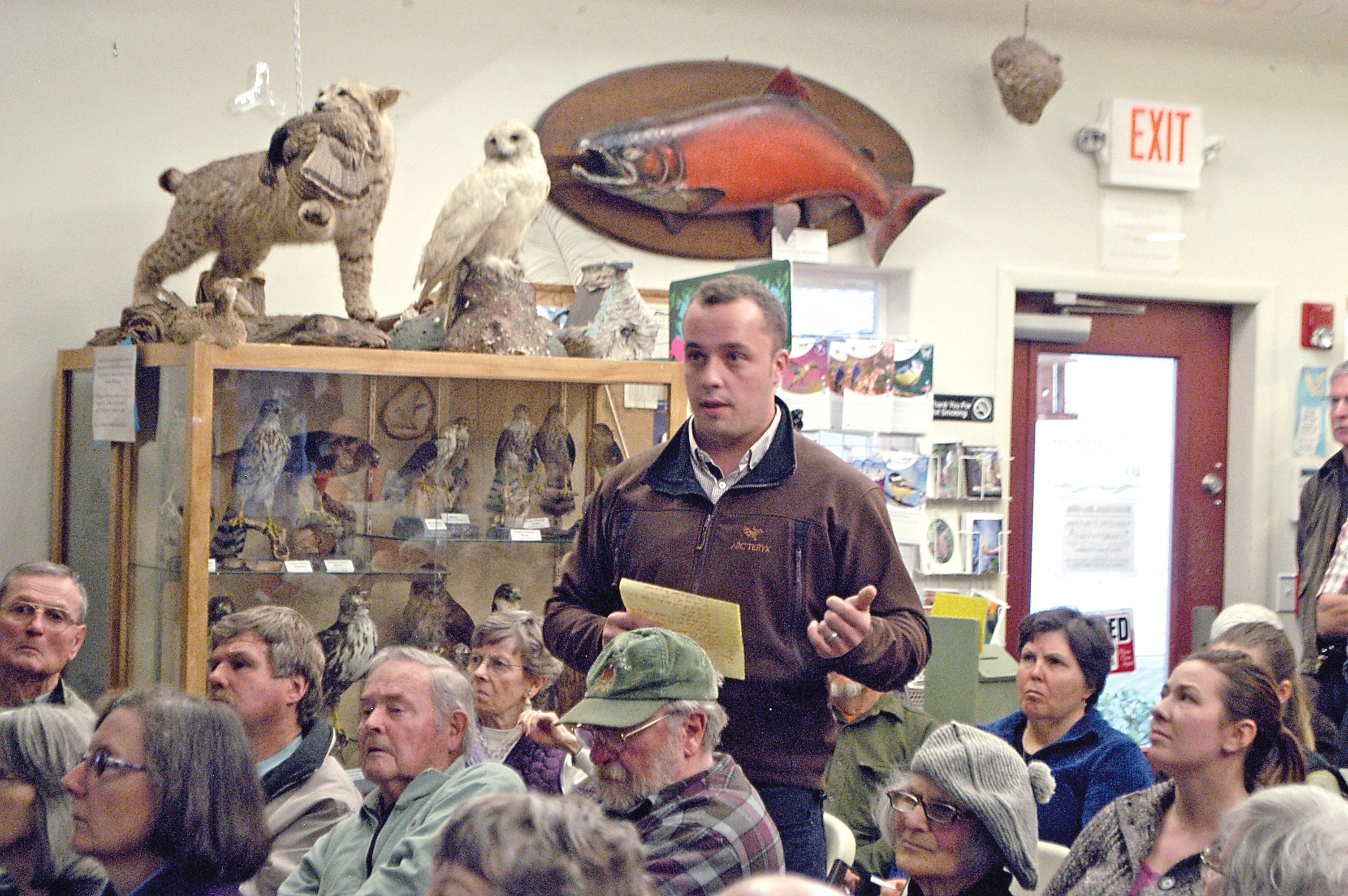SEQUIM — To build or not to build? That is the question facing Sequim area residents who use Towne Road.
About two-thirds of a mile of Towne Road, which currently extends from Old Olympic Highway to Sequim-Dungeness Way, is slated for removal or relocation.
Additionally, a portion of the nearby levee installed by the Army Corps of Engineers also will be removed and relocated as part of the $11.9 million project.
County officials are considering two options once the road is removed — ending Towne Road just north of Dungeness Valley Creamery with a cul-de-sac on other end or keeping it as a through street in a separate location.
Public comment on the issue will be taken until March 31.
About 60 people attended an open house Thursday night hosted by the three Clallam County commissioners at the Dungeness River Audubon Center.
Members of the public differed on which plan to choose, with some hoping the entire process could be halted and the road remain unaltered.
“Is it really necessary. . . to spend all this money and destroy that area, which is a beautiful dike road?” Eliza Main, who lives near the project site, said during the meeting.
“People all around walk it, walk it with their dogs, and just to have it destroyed because you think the fish are going to be better? I don’t think so.”
Clallam County has been working since the late 1990s to reconnect the lower Dungeness River with its floodplain by setting back a portion of the east bank levee of the river.
A levee setback would circumvent the need for emergency repairs in the aging, existing levee while reducing flood risk and peak water velocities.
Native fish species also would benefit from a restored floodplain, officials have said.
“The Dungeness River does not have a dam on it, like the Elwha, but it has plenty of other. . . anthropogenic stressors going all the way back to 1855,” Randy Johnson, Jamestown S’Klallam tribe habitat program manager, said during the meeting.
“Since then, a veritable plethora of impacts have occurred to the river that have caused it to be less than ideal habitat for salmon” and other species of fish, he said.
“One of the really serious [impacts] to salmon has been the loss of floodplains through the number of dike construction and other floodplain constriction projects. They flourish much better when they have access to floodplain habitats.”
When completed, this large-scale ecosystem restoration project will reconnect about 1 mile of river channel with 112 acres of the floodplain on the east bank, much of which has been reforested.
Derrick Eberle, who lives on a farm on Towne Road, said his family’s preference “is to leave the road exactly where it is.
“If that can’t happen for any reason, our second preference would be to cul-de-sac the road, but [there are] a lot of problems with that too.
“There is a drug problem farther to the north. A dead end like that could cause more illicit activity to happen there.”
If the county instead decides to keep a through road, “we certainly don’t want it close to our property,” he continued.
“We don’t want someone to come onto our property” which is “an active farming operation.
“We don’t want the liability.
“So if it does come any closer, we want to make sure that there is plenty of buffer” such as fencing and vegetation.
Some participants worried that removing a through road would eliminate an extra escape route by residents to the north if a tsunami were to make landfall there.
According to County Engineer Ross Tyler, even if the road is closed to through traffic, the relocated levy must have a functioning maintenance road per Army Corps of Engineer regulations.
That road would be available to emergency vehicles, maintenance vehicles, farm vehicles — and in case of tsunami — public traffic trying to flee south.
“If the road is either relocated elsewhere or eliminated via cul-de-sac, there still needs to be that road on top” of the levy, he said.
“There is still that element of connectivity for emergency vehicles and the farm equipment.
“We know farm equipment has to go through here. It is one of the [heaviest] farmed areas in the county.
“We have this option for emergency and farm equipment no matter what happens.”
The various comments submitted by those who attended the open house will play a large role in the final decision making process by the Clallam commissioners, who will make the ultimate decision in the end, said Cathy Lear, Clallam County habitat biologist.
“It is a county road, so everyone in the county has a voice here.”
Those who were unable to attend Thursday’s meeting still can participate in the commenting phase of the project.
Written comments can be submitted to Clallam County Public Works, 223 E. Fourth St., Suite 6, Port Angeles, WA, 98362; or via email to roads@co.clallam.wa.us.
For more information call 360-417-2379.
________
Sequim-Dungeness Valley Editor Chris McDaniel can be reached at 360-681-2390, ext. 5052, or at cmcdaniel@peninsuladailynews.com.
